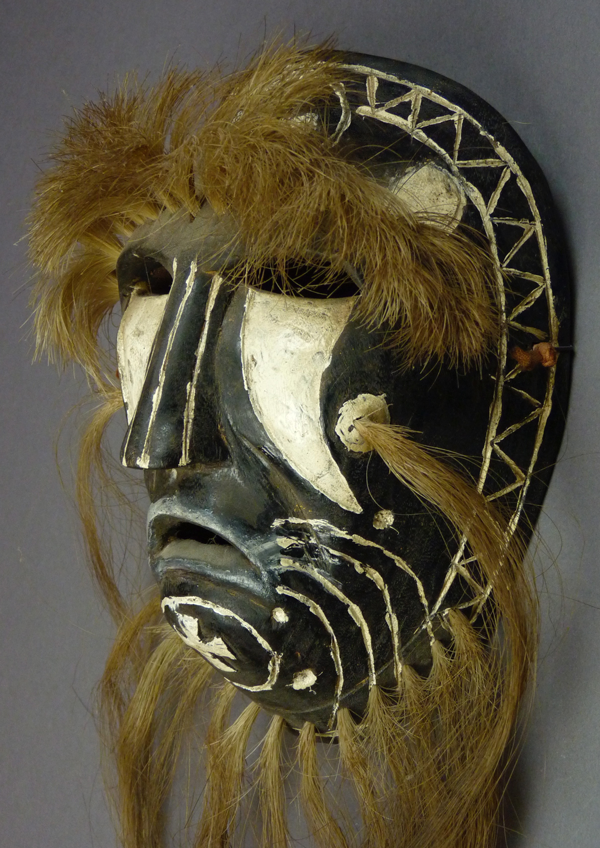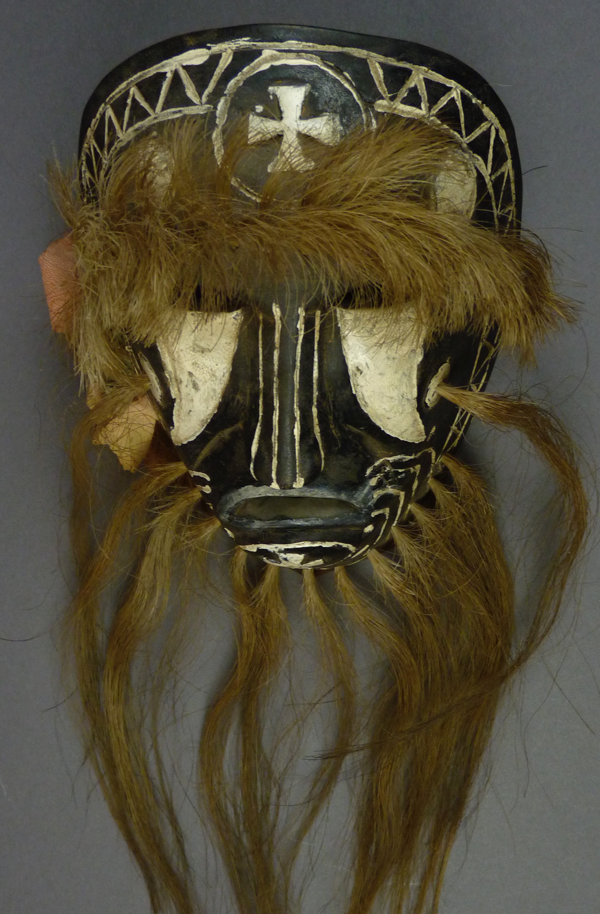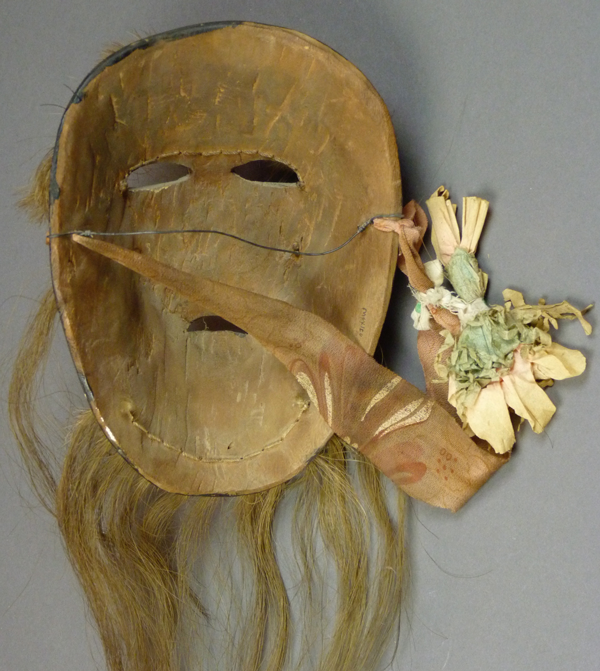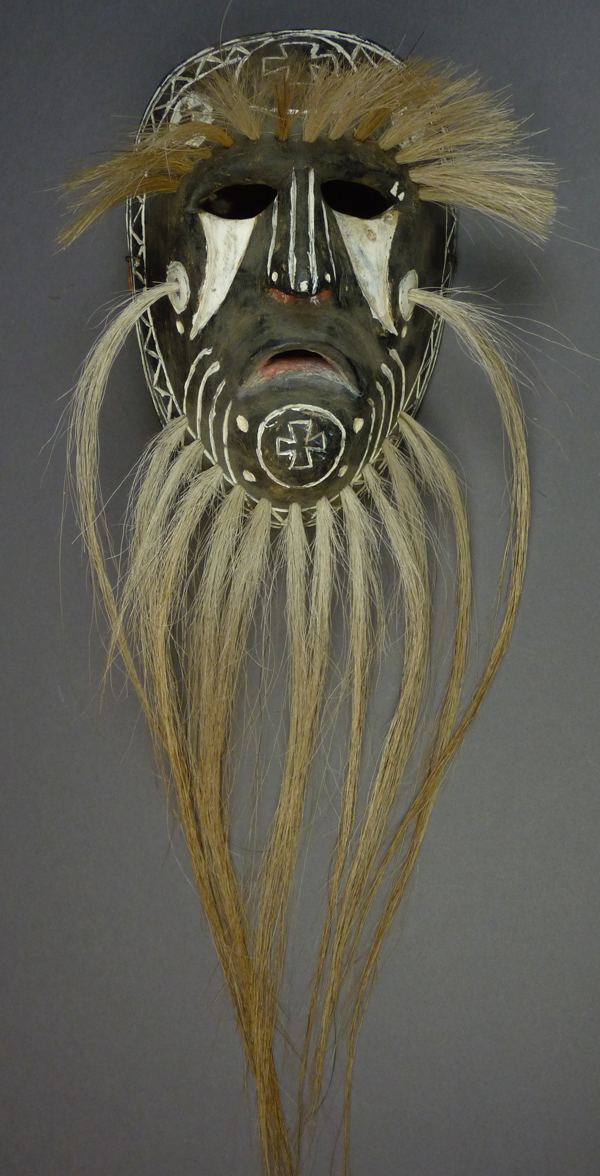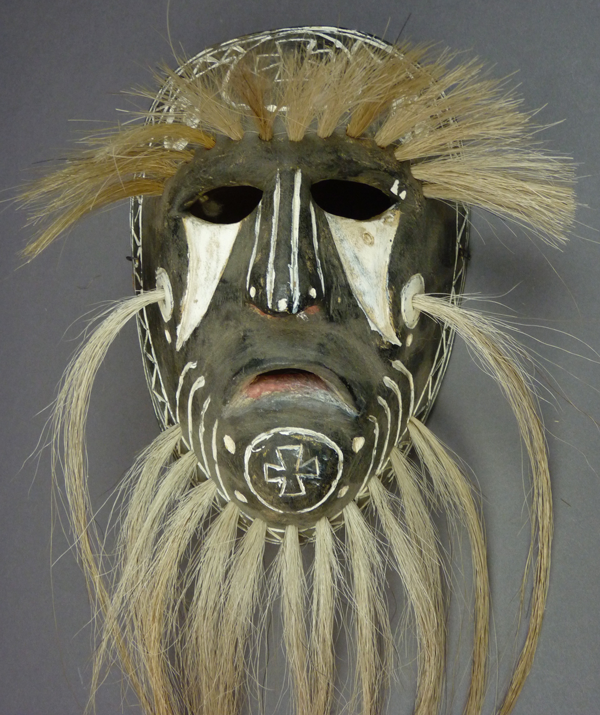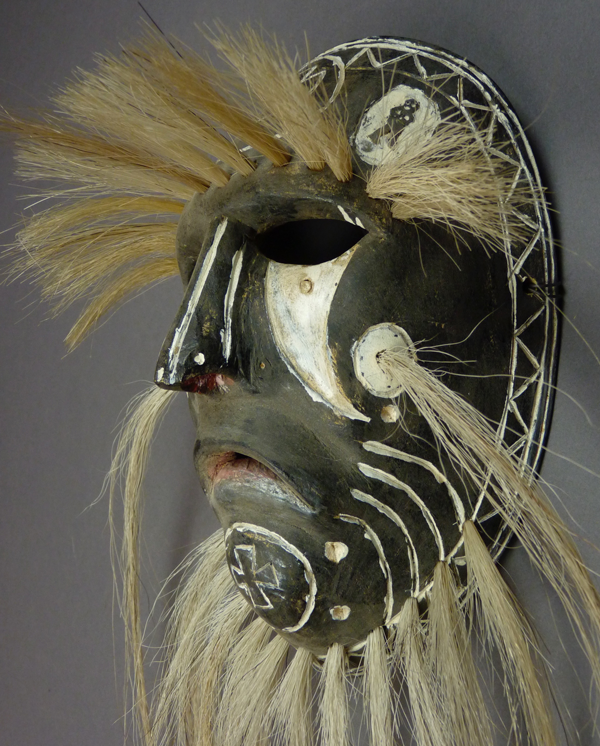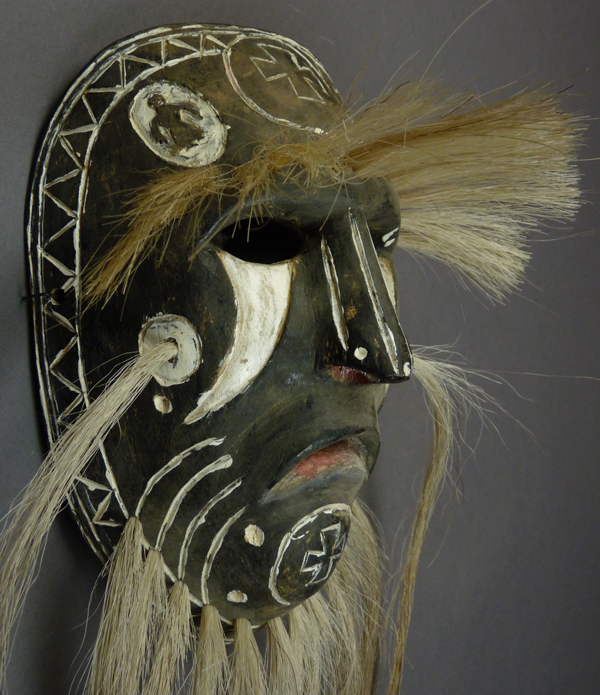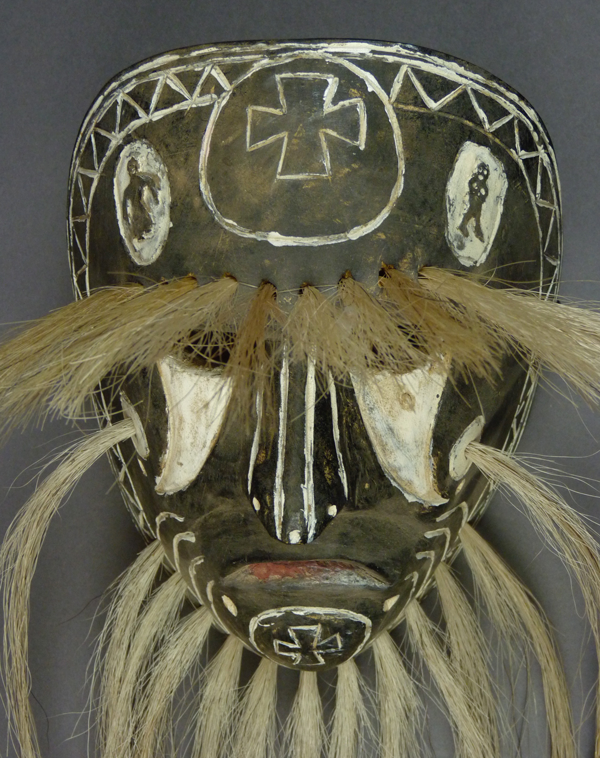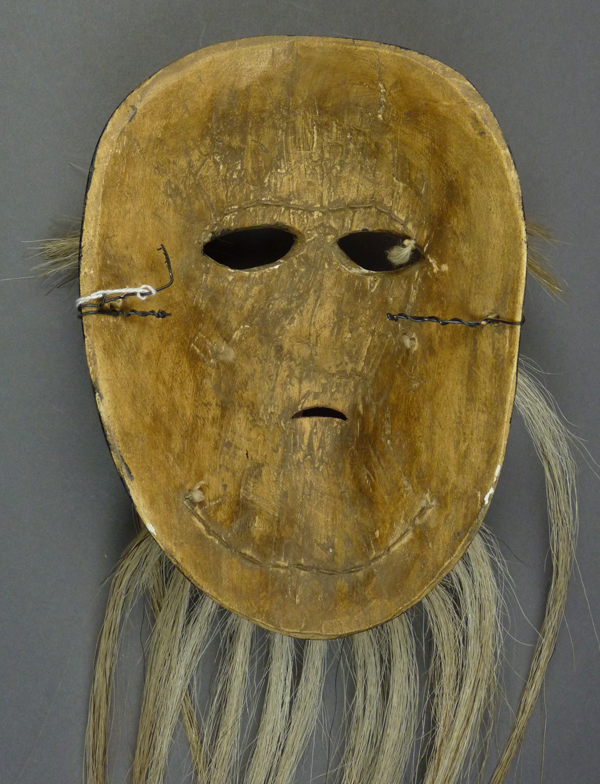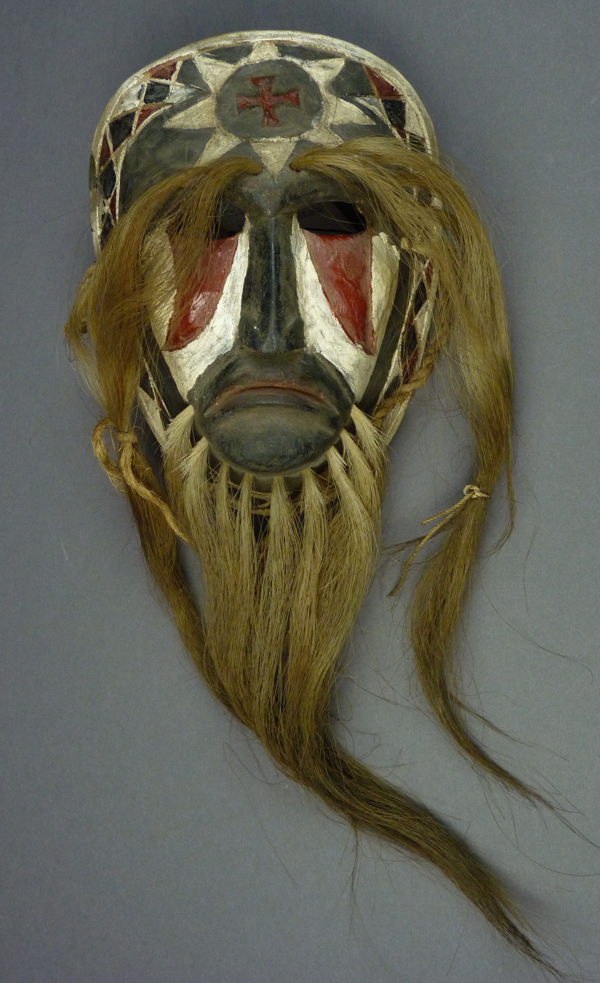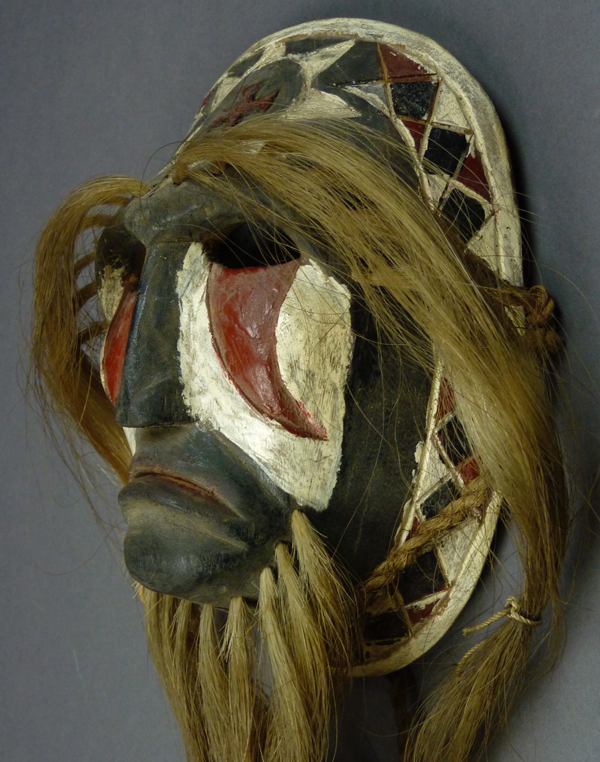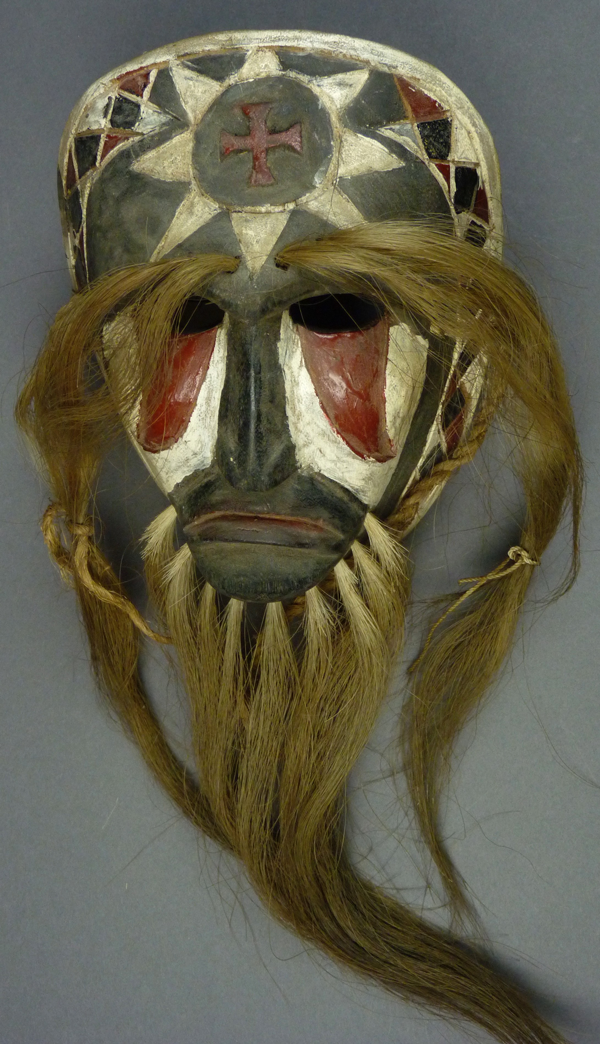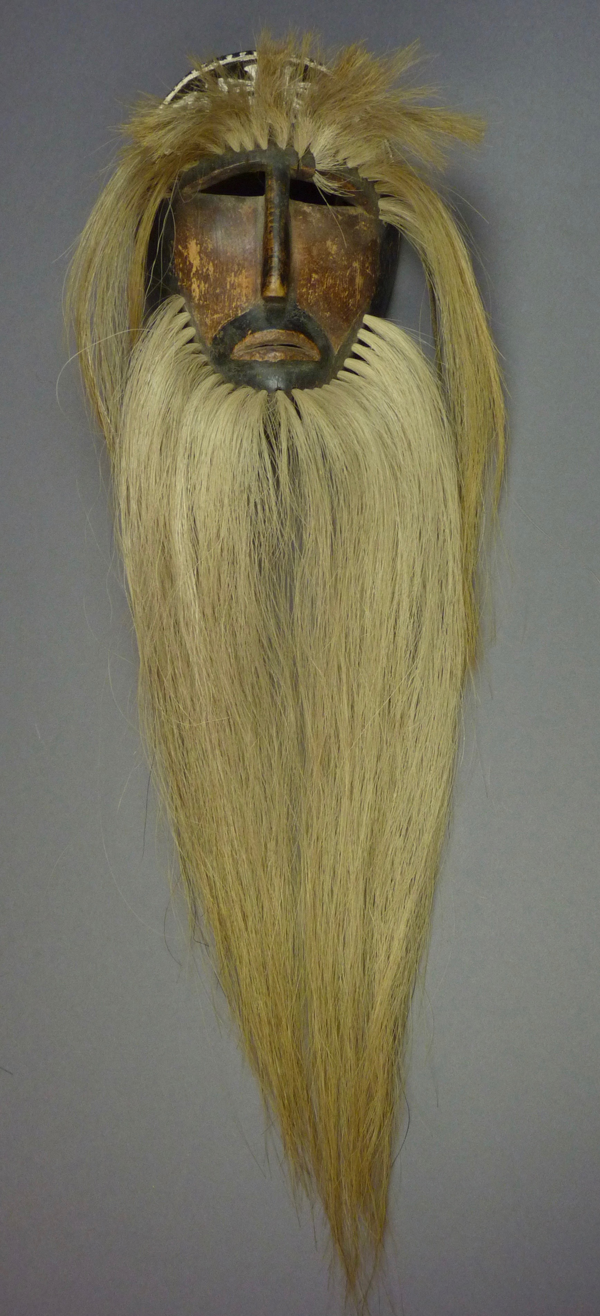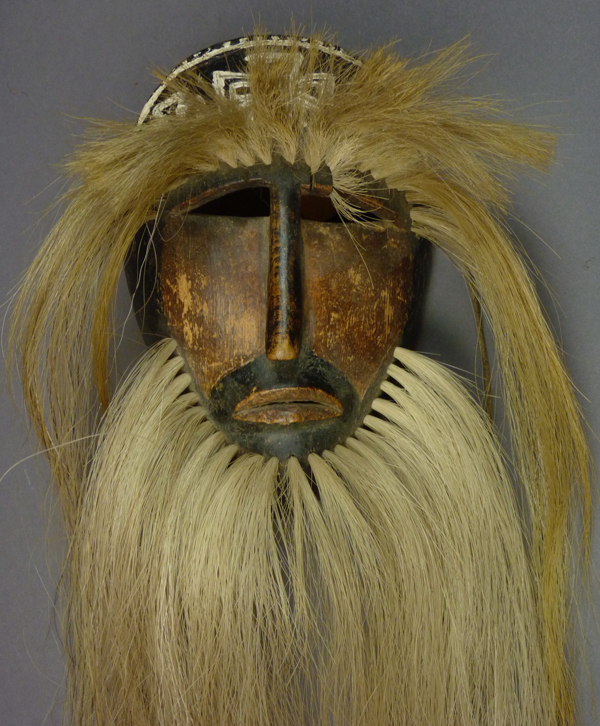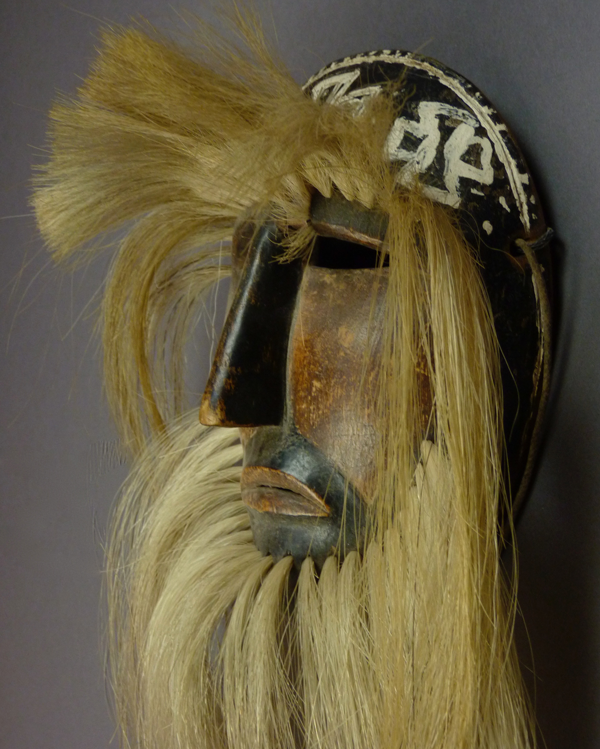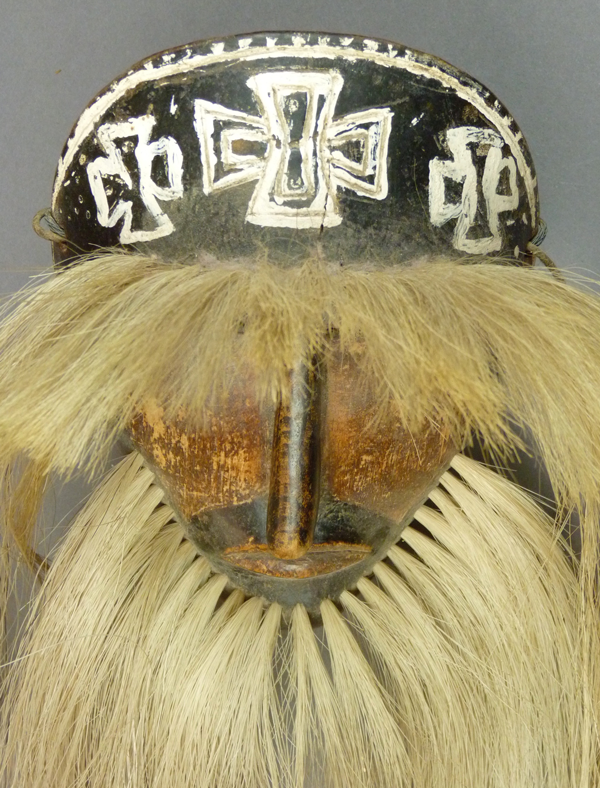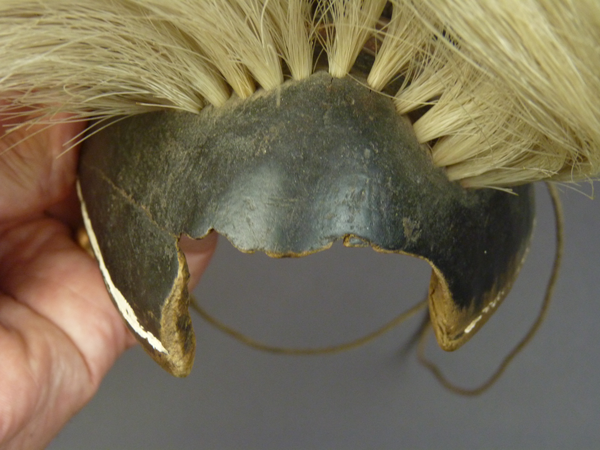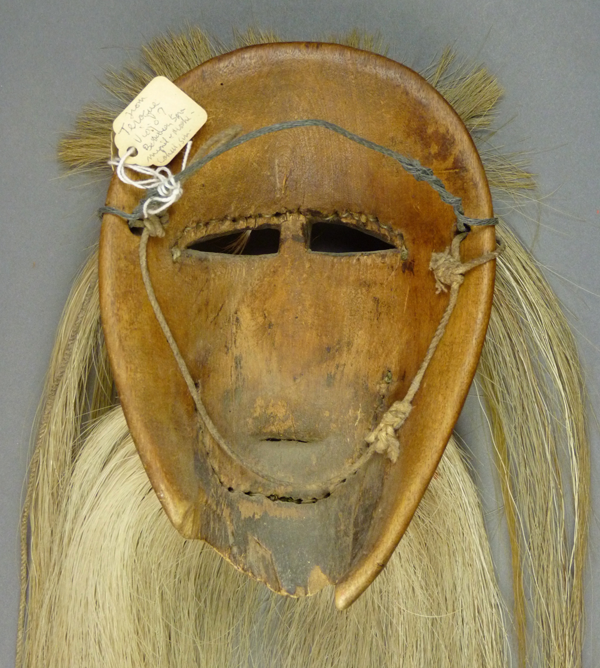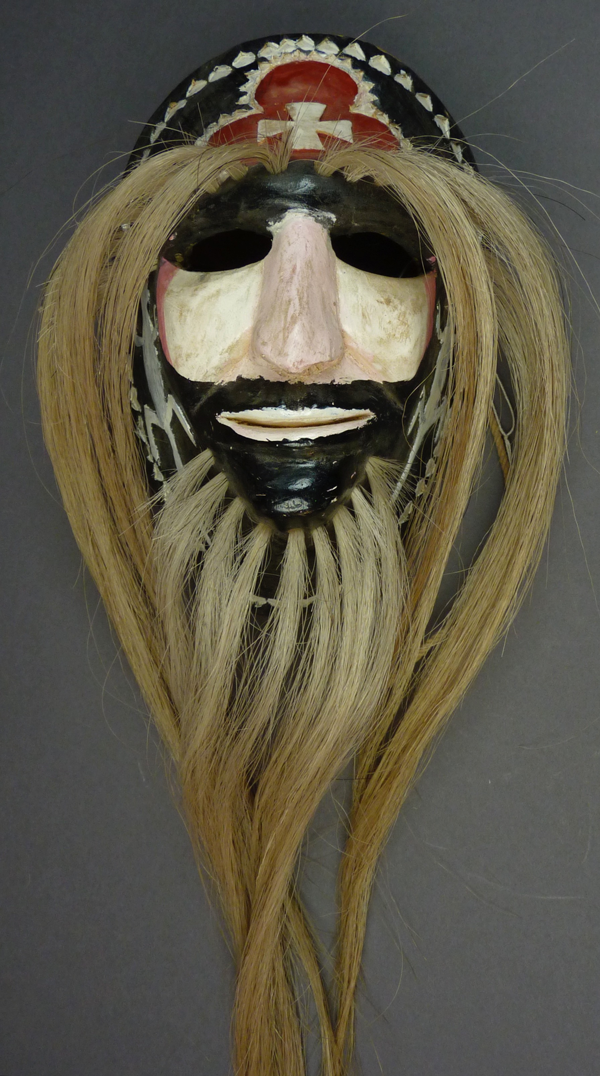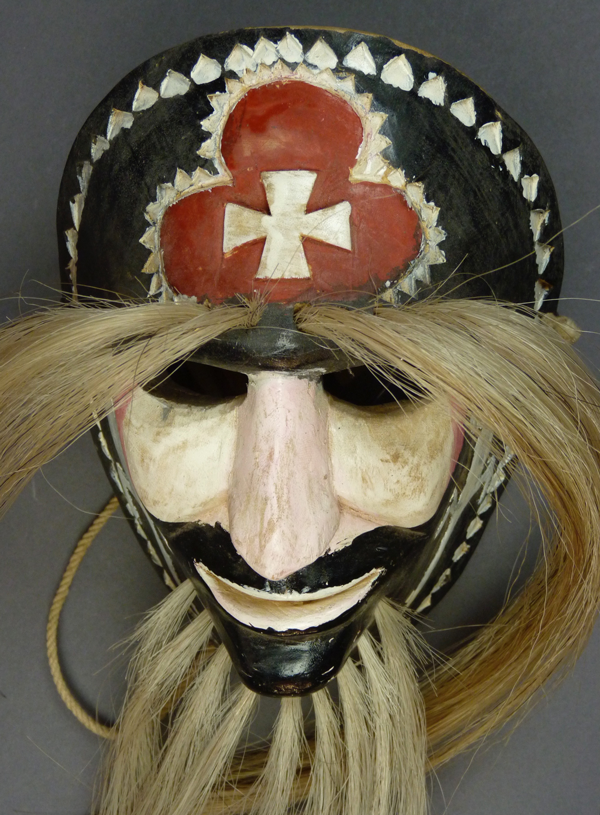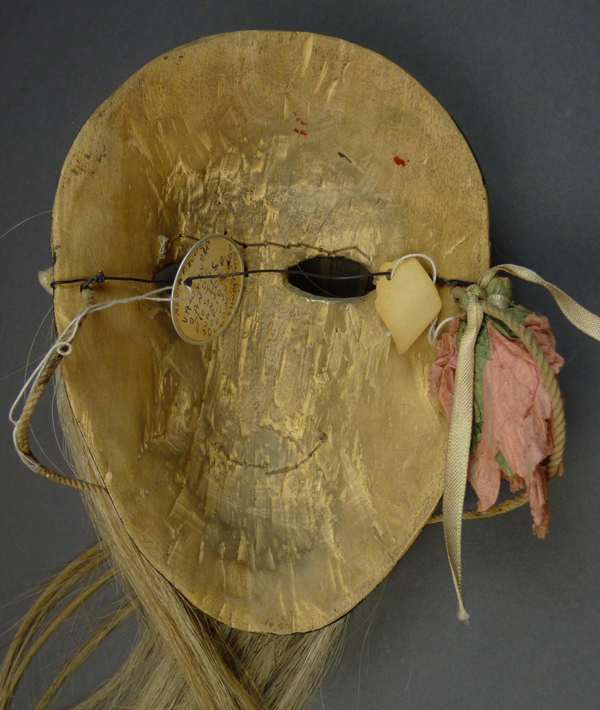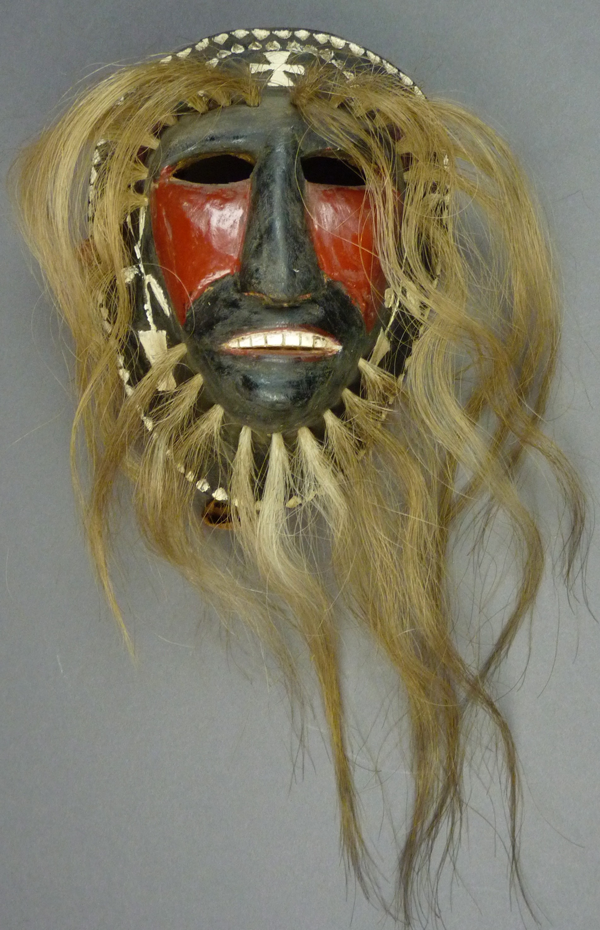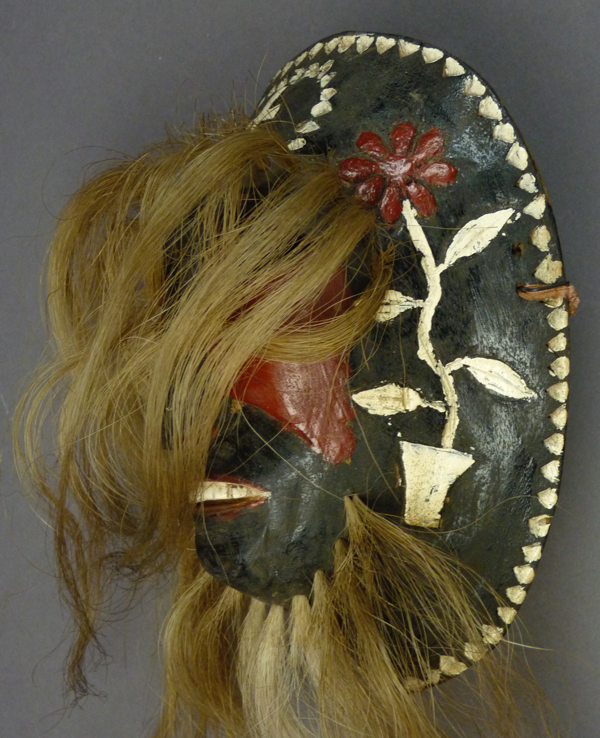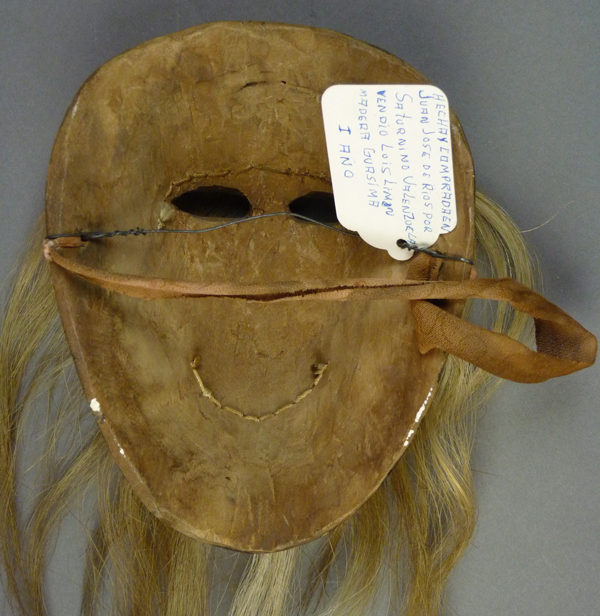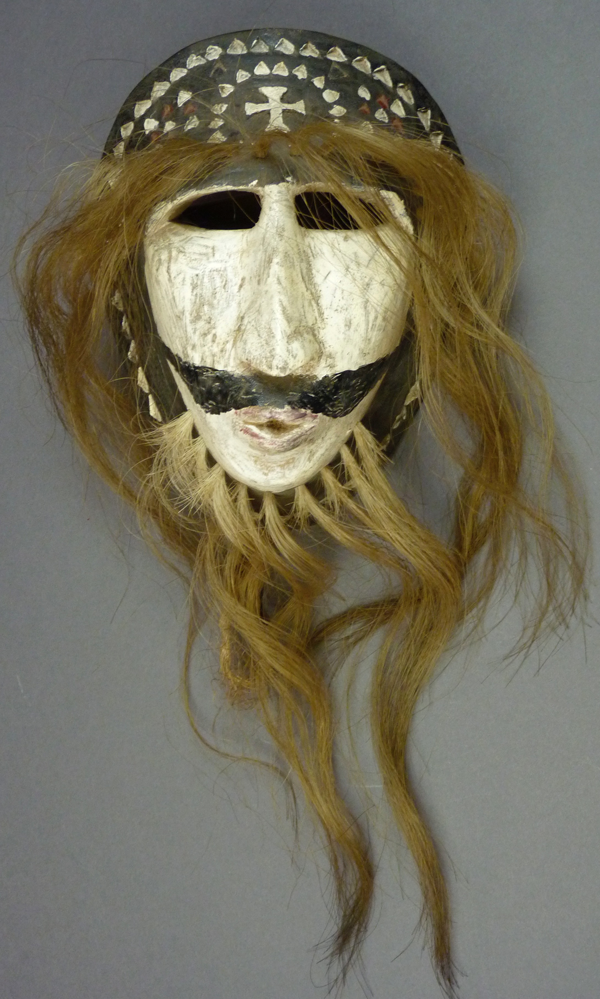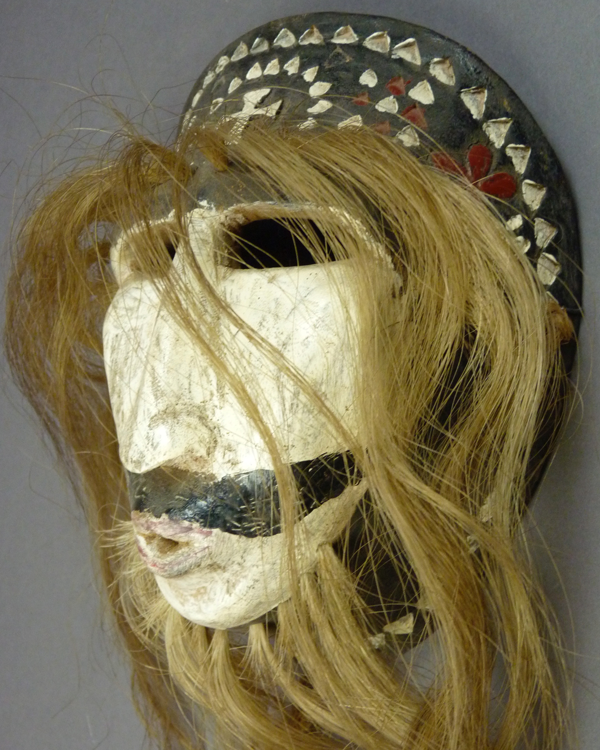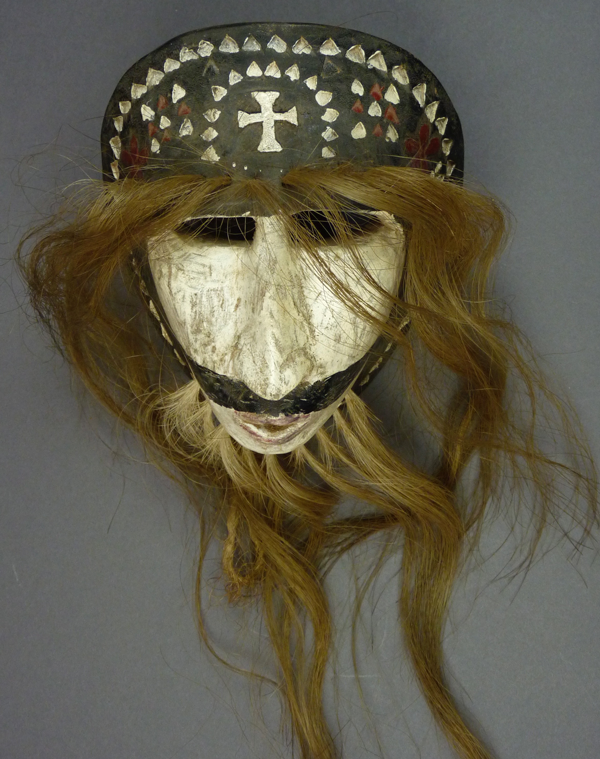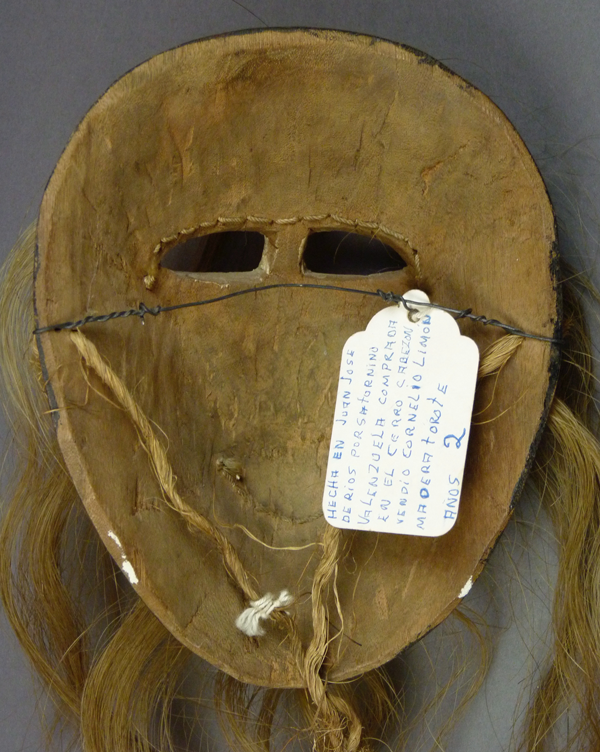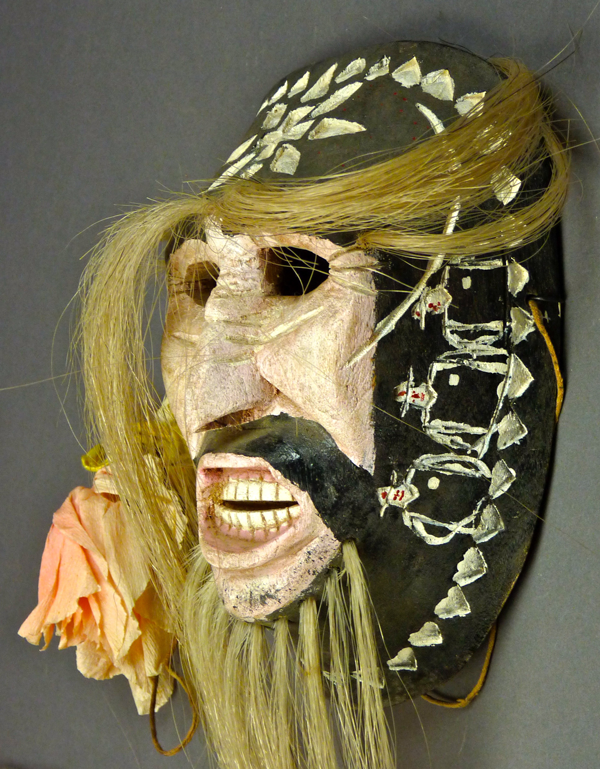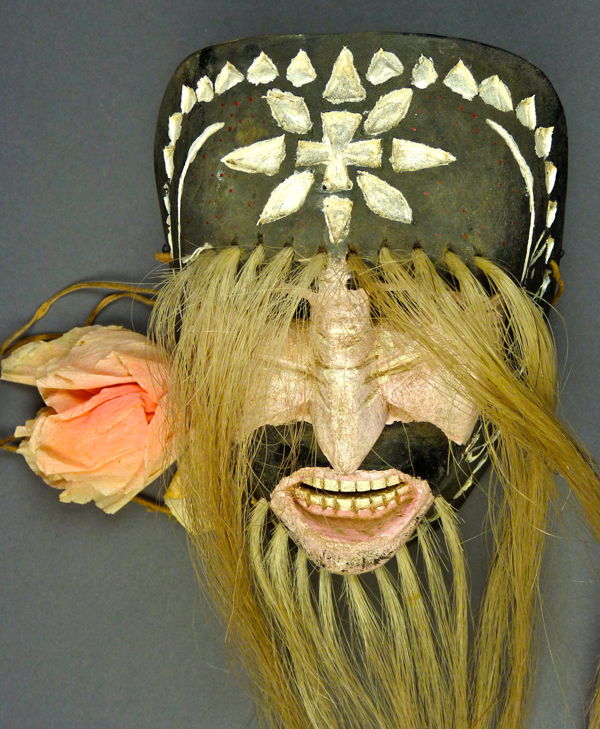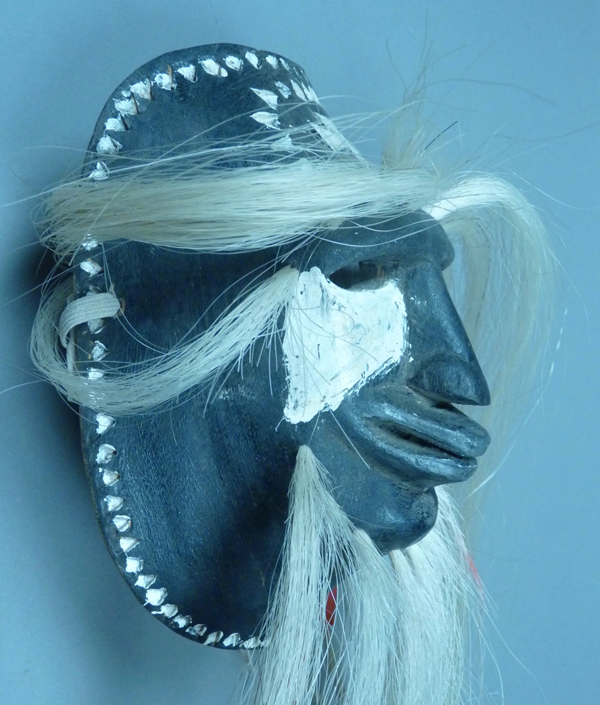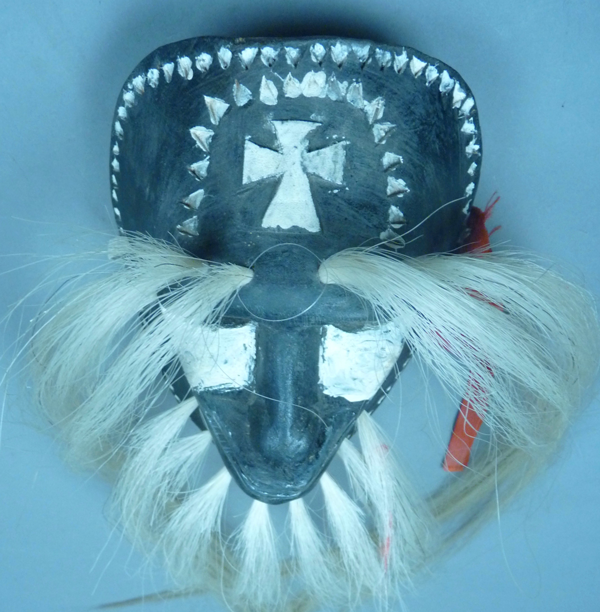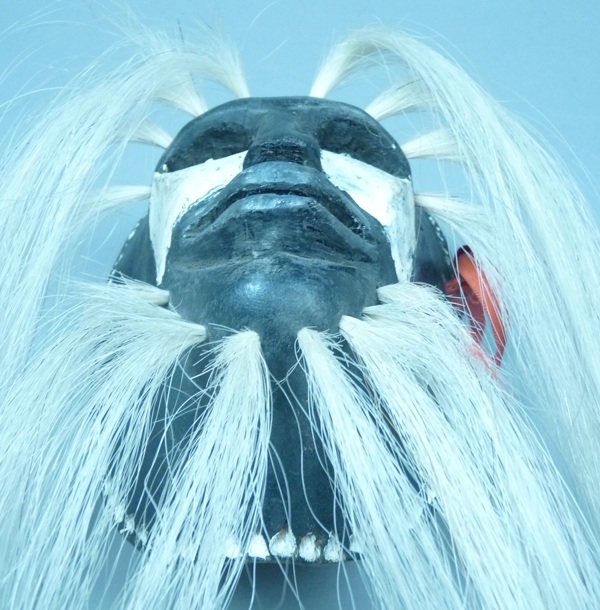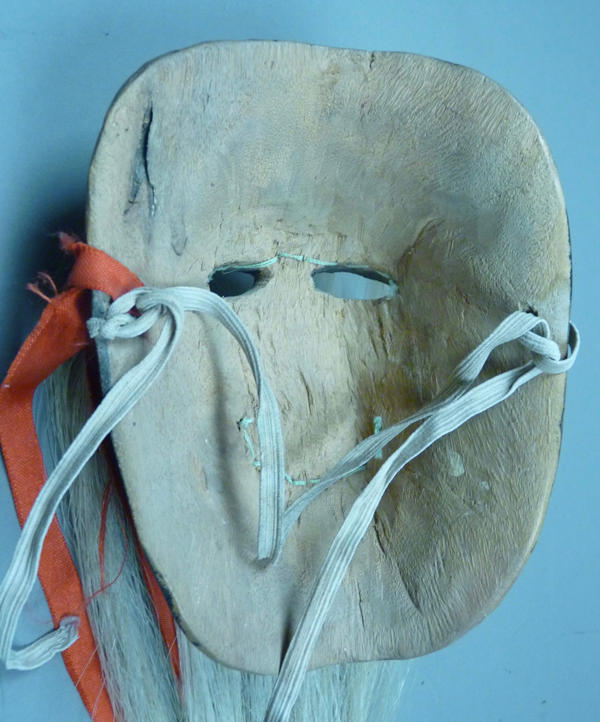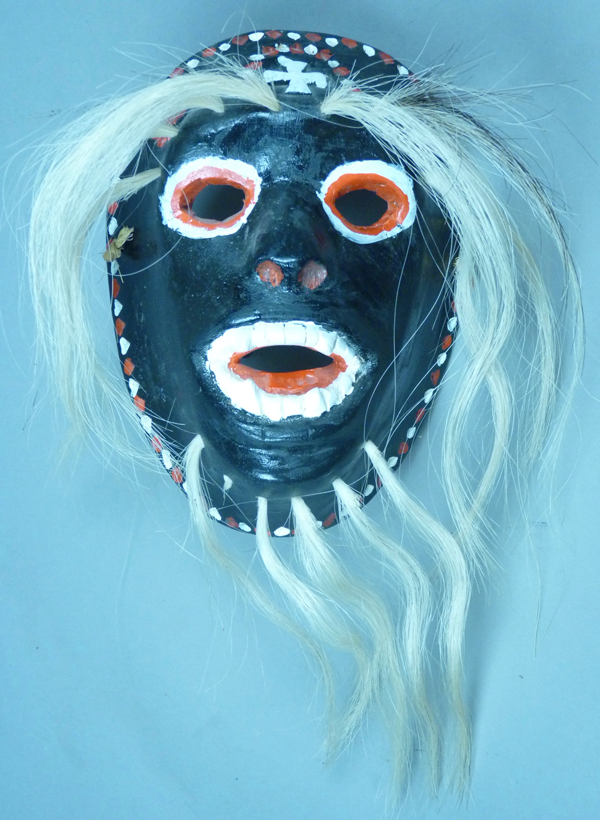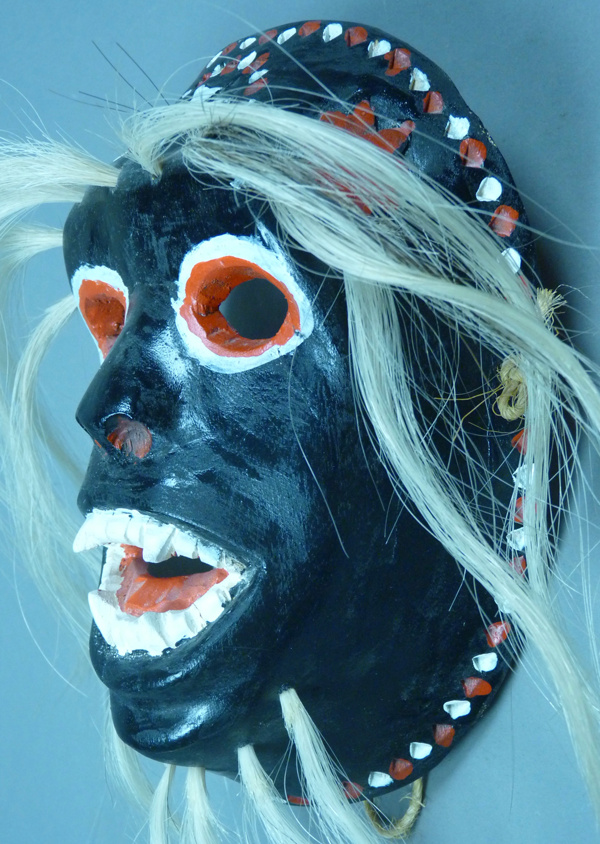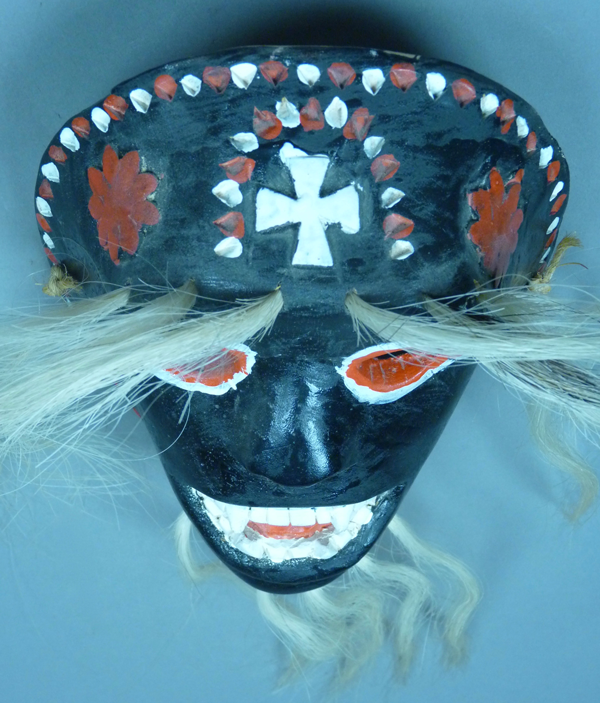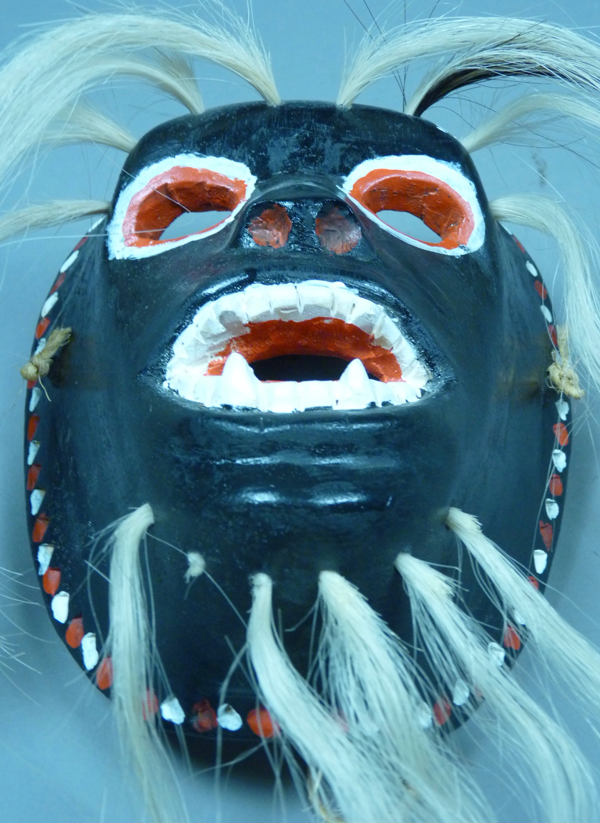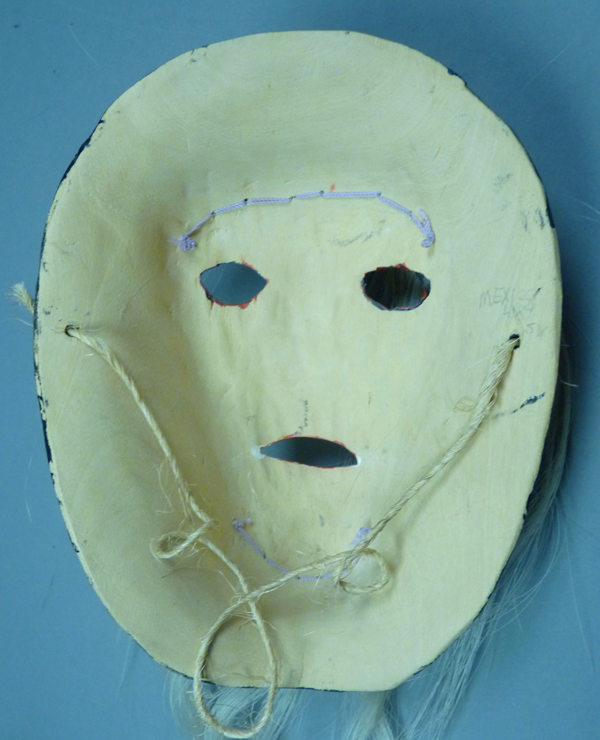In the last two posts we looked at masks by Saturnino Valenzuela that had been in the personal collection of Barney Burns and Mahina Drees. They had kept many danced examples, even as they bought and sold many of his undanced masks to Indian Arts Dealers and collectors. Today I will show you some additional masks from another private collection that were also carved by Saturnino. Several of these seem extraordinary to me. I photographed these when they were in the collection of Jerry Collings.
The first is a copy by Saturnino of a circa 1900 Yaqui mask that he had apparently seen in a photograph. It was collected by Roberto Ruiz in 1982, after it had been danced for two years.
This is a very attractive mask with a frowning mouth. Note the white circles flanking the forehead cross.
Because it copies an old Yaqui style, this mask has crosses on the forehead and chin.
This mask is 8 inches tall, 6 inches wide, and 3½ inches in depth. I measured some of these masks when I photographed them (back in December 2011) because I find them so spectacular.
There is considerable staining from use.
The second mask is nearly identical to the first, except that images of a man and a woman have been painted within the white circles flanking the cross. This mask has no dates of collection or use, but it must surely have been made circa 1980, like the first.
The crosses were painted in outline rather than being filled in.
There is the image of a male figure on the left side.
There is the image of a female figure on the right side.
The purpose of these two images is unknown. I don’t recall ever seeing human images on circa 1900 Yaqui masks. On the other hand, Saturnino often inserted unexpected images onto his Pascola masks.
This mask is 8 inches tall, 5½ inches wide, and 2¾ inches in depth.
There is heavy staining from use.
This third mask was collected in 1983 after having been danced for 3 years, so it also dates to circa 1980.
This is another example of Saturnino’s masks that borrowed design features from older Yaqui masks.
I really like the vivid image of the sun that surrounds the forehead cross.
This mask is 7½ inches tall, 5½ inches wide, and 3 inches in depth.
This back too is darkly stained from use.
The next obviously old and worn Pascola mask comes to us with no dates of carving or use.
Look at the density of the hair.
We see again the frowning mouth borrowed from circa 1900 Yaqui masks.
There are three crosses on the forehead, as if to represent Christ and the two men who were crucified with him.
This mask was broken at the chin.
I didn’t measure this one.
There is marked staining from use on this mask.
The next mask was another that was collected by Roberto Ruiz for Barney Burns, in 1983.
There are lizards carved in relief on the cheeks.
The forehead cross is framed by a shape with three lobes, as if representing the Trinity, and that shape is surrounded by rays of light. Such obvious Christian imagery reminds us that the Yaqui and Mayo Indians have strong religious traditions that blend Native and Christian beliefs.
This mask is 8 inches tall, 5¼ inches wide, and 3 inches in depth.
There is marked staining from use.
The next mask is like some that you have seen before, with potted flowers on the cheeks. This is another mask that was collected by Roberto Ruiz for Barney Burns, in 1983. This mask had been danced for one year at the time of collection.
On this mask and those that follow, we see again Saturnino’s usual rim design.
This mask is 7½ inches tall, 6 inches wide, and 3 inches in depth.
The back was significantly stained over one year of use.
Here is yet another mask that was collected by Roberto Ruiz for Barney Burns, in 1983. There had been two years of dance use.
We saw a similar mask that remained in the Barney Burns and Mahina Drees collection.
This is another one with a flower.
This mask is 7½ inches tall, 6 inches wide, and 3 inches in depth.
This is another dark back.
The next mask is one of the most interesting that I have ever seen by Saturnino. Page down to see why. It was collected by Roberto Ruiz for Barney Burns in December, 1982.
The carved design on the cheeks of this mask depict three Deer Singers in their characteristic position during a fiesta performance. I have never seen anything like this on any other Yaqui or Mayo mask.
The forehead cross is nicely framed with rays of light, and the rim design is typical for Saturnino.
This mask is 7 5/8 inches tall, 5 inches wide, and 3 inches in depth.
The back has the staining of a mask danced for a few years.
The next mask in this post came from the same private collection, however I traded for it in 1995. It had been collected in the 1980s, and there is no record of its length of use.
This mask has snouted mouth. There is a very similar mask in the collection of Barney and Mahina.
Otherwise this mask looks like many others by Saturnino.
This mask is 7½ inches tall, 5¼ inches wide, and 3½ inches in depth.
The back of this mask has only moderate staining from use.
Here is one more for the road. I bought this made for sale mask from a Tucson area dealer in 2000. However it had been collected by Barney and Mahina in 1989. Their tag states that this represents a “water monster.” I am intrigued by this label.
This mask has the short nose and fanged teeth that might remind us of an ape.
On the forehead, the Christian cross is flanked by flowers.
This mask is 8 inches tall, 6 inches wide, and 2¾ inches in depth.
This mask was never danced.
Next week we will look at Pascola masks by Pablo Pacheco, of Rincon Aliso, Sinaloa.
Bryan Stevens


